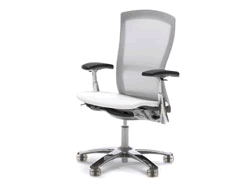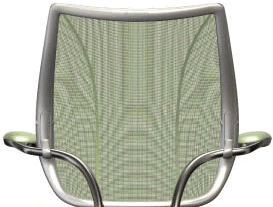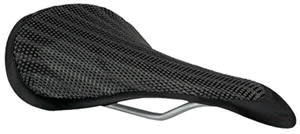Ulrike and I had a brief discussion about the thermal properties of our Tempur-Pedic mattress today (summary: great overall, but it seems somehow hotter in the summer than other mattresses) and I said for hot climates it’d be nice to have an Aeron bed. It would have a supporting mesh material that would let air circulate under your body. It would have to be stronger than a hammock and as soft as a mattress, perhaps by layering materials.
This didn’t seem unfeasible to me as I watch the progression of mesh support. First the Aeron…

Then adoption in other ways by other chairs, like my beloved Life…

And then Niels Diffrient upted the ante by joining separate pieces to provide support in a different way…”a limited stretch mesh pieced together like a shirt.” (See the Metropolis article)

But what really made me sit up and take notice was SaddleCo’s Flow Ti bike saddle. Mesh bike seats aren’t new — recumbants have had them for years — but in this case the saddle often has to support a person’s entire weight on two small areas that contact the cyclist’s sit bones, so it’s a higher-tech solution. In their words they use “tensioned elastomeric monofilament fabric mesh.” I think that means it’s really stong…

Given that all this evolved from the humble hammock, why not return to the hammock to make a tensioned elastomeric monofilament fabric mesh hammock, aka a warm climate mattress? Consumers are rabidly switching from springs to foam, so they may soon be ready for mesh.



